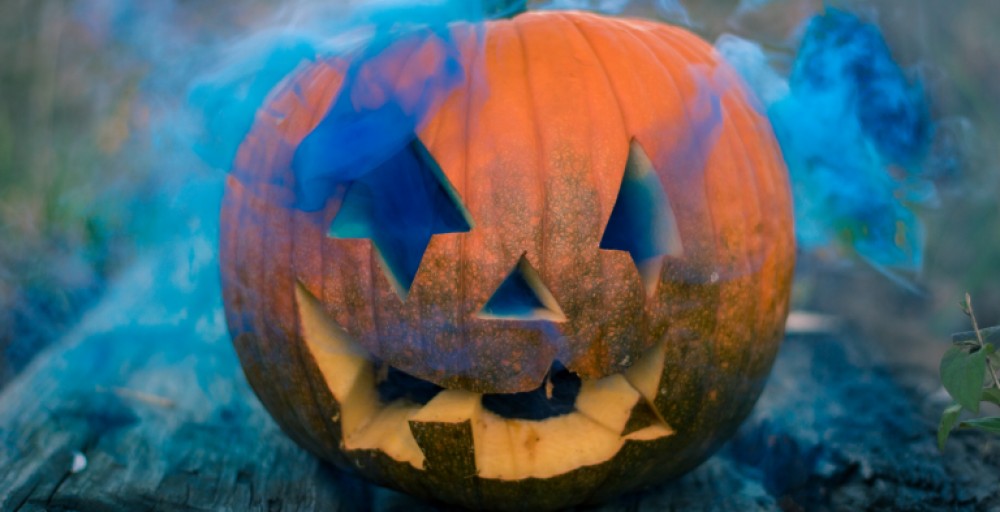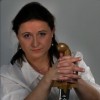Autumn – Meaning, Festivals and Associations
In ancient times autumn was probably associated with the myth of Demeter (Roman Ceres) - the Greek goddess of agriculture, harvest and the cycle of life and death, and her daughter Persephone.
According to most sources, the word autumn (/ˈɔːtəm/) is derived from the Latin autumnus, archaic auctumnus, and possibly from the ancient Etruscan root autu-. Alternative etymologies include Proto-Indo-European h₃ewǵ- ("cold") or h₂sows- ("dry"). In the Common Era, the word continued to be used as the Old French autompne (automne in modern French) or autumpne in Middle English, and was later Latinized and became commonly used as autumn by the 16th century.
Before the 16th century, harvest (probably derived from the Old Norse haust) was the usual term for this season and it remains common in other West Germanic languages to this day (cf. Dutch herfst, German Herbst and Scots hairst). However, over time, the term harvest lost its unique reference to the time of year and came to refer only to the actual activity of reaping, and autumn, as well as fall, began to replace it as a reference to the season. The Polish word for autumn, jesień, is probably derived from the Proto-Slavic osenь (later esenь, jesenь). It may also be derived from the Gothic asans “harvest time” or Old Germanic aran.
The alternative English word fall for autumn traces its origins to Old Germanic languages. The exact derivation is unclear but the Old English fiæll or feallan and the Old Norse fall are possible sources. Fall came to denote the season in 16th-century England, probably as a contraction of Middle English expressions like "fall of the leaf" or "fall of the year". During the 17th century emigration to the colonies in North America, most settlers used the English language and took pains to preserve it. So, while the term fall (and a lot of other common terms) became practically obsolete in Britain, it still remains the common term used in North America.
Autumn is one of the four temperate seasons and it marks the transition from summer to winter which starts in September (Northern Hemisphere) or March (Southern Hemisphere). Day length decreases and night length increases as the season progresses, until the Winter Solstice in December (Northern Hemisphere) and June (Southern Hemisphere).
In the English-speaking world, Autumn traditionally began with Lammas Day and ended around Halloween, the approximate mid-points between Midsummer, the autumnal equinox, and Midwinter. In modern times, autumn traditionally starts in Europe and North America with the September equinox (21 to 24 September) and ends with the winter solstice (21 or 22 December). Popular culture in the United States associates Labor Day, the first Monday in September, with the end of summer and the start of autumn. In the traditional East Asian solar term, autumn starts around 8 August and ends around 7 November. According to the traditional Irish Calendar, which is based on ancient Gaelic traditions, autumn lasts throughout the months of August, September and October, or possibly a few days later. In the Irish language, September is known as Meán Fómhair ("middle of autumn") and October as Deireadh Fómhair ("end of autumn"). Persians celebrate the beginning of the autumn as Mehregan to honor the god Mithra (Mehr) – the Zoroastrian divinity of contracts and harvest.
In southern hemisphere countries (such as Australia and New Zealand), which base their seasonal calendars meteorologically rather than astronomically, autumn officially begins on 1 March and ends on 31 May.
Autumn is not only associated with harvest, the passing of the year, ripe apples, apple cider and pumpkins. It has often been referred to as “the unhealthy season” due to illnesses associated with the cold and rainy weather. Other typical associations include melancholia, depression, death, time of creativity and autumn festivals.
Traditional Autumn Festivals
Many cultures celebrate various autumnal festivals. The most popular ones are probably Thanksgiving and Halloween. In many countries, on Halloween children dress in costumes and go door to door asking for candy (a practice known as trick-or-treating), while adults may host costume parties or meet up with friends. The less known are, for example, the Jewish Sukkot holiday (with roots as a full-moon harvest festival of "tabernacles") and the Jewish Rosh Hashanah which is the Jewish New Year and starts on the first day of the month of Tishr (19 September 2020). It marks the beginning of a ten day period of repentance leading up to Yom Kippur. There is also the Chinese Mid-Autumn or Moon festival (1 October 2020) which is celebrated by Chinese communities all over the world. Diwali is the Hindu "Festival of Lights" and is one of India's most important and popular festivals. It falls at the new moon towards the end of October or early November and lasts for two days.
Autumnal Trailing of the Sheep in Poland
Autumnal Trailing of the Sheep (Polish: jesienny redyk) is one of the more spectacular annual festivals and it takes place in the Polish mountains. Similar festivals are held in some locations in the US (e.g. Idaho) and some alpine regions of Europe (known as Almabtrieb, Alpabzug, Alpabfahrt or Désalpes they can also refer to seasonal cattle herding). The redyk is intended as a celebration of the tradition of sheep husbandry in the Polish Podhale region. During the redyk, the herders (dressed in their traditional costumes) herd hundreds or sometimes thousands of sheep from the mountain pastures through the region’s towns and villages to their winter shelters.
Traditionally, the autumnal trailing of sheep starts on 29 September (Michaelmas) and the best trailing festival is probably the one held in Szczawnica. This festival is a great tourist attraction in Poland.
Polish All Saints’ Day
On 1 November, Poles celebrate Wszystkich Świętych (All Saints’ Day, aka All Hallows’ Day) and on 2 November they celebrate Święto zmarłych (All Souls’ Day), which commemorates the faithful departed. It is a silent and solemn celebration because at this time whole families visit cemeteries and decorate the graves of their loved ones with candles, lanterns and flowers, and sometimes pray (usually on 1 November). The Polish cemeteries are a true sight to behold on those nights.
Autumn in Literature and Art
John Keats' poem To Autumn is still very popular today. In fact, the Bridget Jones character recites the first line of this poem to Daniel Cleaver while they’re rowing on the pond during their mini-break (see film: Bridget Jones’s Diary).
Edgar Allan Poe’s poem The Raven is famous for its musicality (which is to a large extent created by the consistent use of internal rhyme and alliteration), and supernatural atmosphere. It tells a story of a talking raven's mysterious visit to a distraught young lover, tracing the man's slow descent into madness. The lover is lamenting the loss of his love, Lenore, and the raven, sitting on a bust of Pallas (Athena) seems hell bent on driving him mad by answering every question or proposition with its constant repetition of the word "Nevermore".
William Butler Yeats' poem The Wild Swans at Coole is a melancholy piece about the poet's search for lasting beauty in a changing world where beauty is mortal and temporary.
Paul Verlaine's Chanson d'automne (English translation: Autumn Song) is a short but exceptional poem in which the poet employs various techniques such as ‘consonance’ to create an onomatopoeic effect that sounds like a monotonous violin. During WW II lines from this poem were used to send messages from SOE to the French Resistance about the timing of the forthcoming Invasion of Normandy.
Leopold Staff’s Deszcz jesienny (English Translation: Autumn Rain) is probably the best example of the use of amphibrachic metre, and the reader practically hears the rhythm of raindrops hitting against a window pane. It begins with the lines: "O szyby deszcz dzwoni, deszcz dzwoni jesienny i pluszcze jednaki, miarowy, niezmienny, dżdżu krople padają i tłuką w me okno...”.
Another autumnal poem called Wspomnienie (English translation: Memory) by yet another famous Polish poet, Julian Tuwim, starts with the line: „Mimozami jesień się zaczyna, złotawa, krucha i miła” (English translation: "Autumn brings forth mimosas, golden, fragile and sweet”), and it became the lyrics for a beautiful ballad performed by Czesław Niemen.
Giuseppe Arcimboldo’s whimsical painting Autumn from 1573 (which can be admired in the Louvre Museum) is probably the most popular panted depiction of the season.
Autumnal Music
There is a plethora of songs and albums about autumn and its special ambience, and everyone has their favourite one. So, the following are just are some of my personal recommendations.
Les Feuilles mortes, French lyrics by Jacques Prévert (English translation: The Dead Leaves) - the English version of the song was called Autumn Leaves with lyrics by Johnny Mercer, composed by Joseph Kosma. It was performed by Edith Piaf and Ives Montand, among others.
September Morn – Neil Diamond
Leaves That Are Green – Simon and Garfunkel
November Rain – Guns ‘N Roses
L'Été indien (English Translation: Indian Summer) – Joe Dassin
October Rust Album – Type O Negative
October – U2
Autumn Leaves – Bill Evans Trio
November – Tom Waits
Autumn Leaves – Eva Cassidy
References:
https://en.wikipedia.org/wiki/Autumn
http://www.poradniajezykowa.us.edu.pl/baza_archiwum.php?POZYCJA=2620&AKC...







